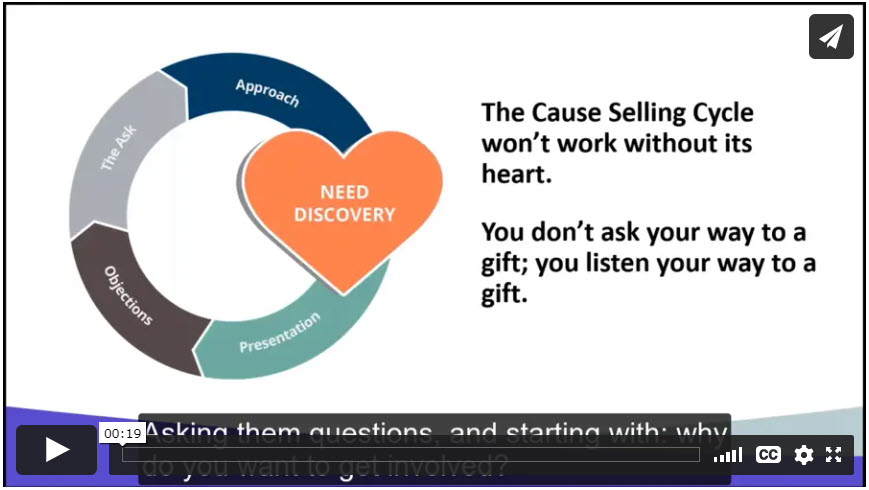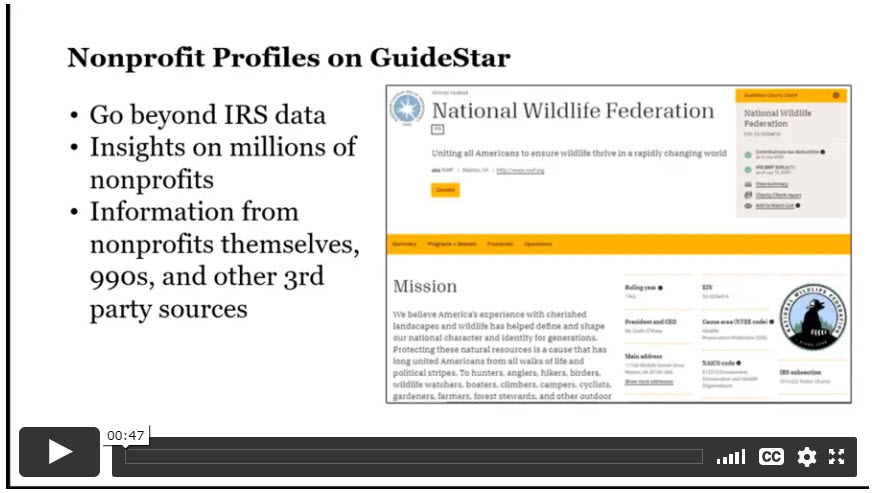Tips for individual giving in uncertain times

Pop quiz: Historically, what has been the biggest source of private giving in the United States? Is it corporations? Foundations? Nope. The answer is individuals. For over 65 years, individual giving has represented around 70 percent of total giving in the United States, and early reports are showing that 2020 saw increases in individual giving.
A successful nonprofit has diversified funding streams, and individual donors play an important role in sustainability, especially during times of crisis. Here are a few tips to help you build strong relationships with individual donors to support your cause in these uncertain times:
1. Engage and retain
No matter what gift amount or level of donor—loyal donors help sustain an organization. Good news! A recent study by the Fundraising Effectiveness Project finds that charitable individual giving grew 10.6 percent in 2020 over 2019—most of that growth was from more individual donors giving small gifts less than $1,000. Your top priority should be retaining those new and loyal annual donors. They are your new and greatest fans, and the potential for them to give more is strong. Keep in mind: Many folks give an initial, smaller “test the waters gift,” so a follow-up plan is key for retention. The more your supporters are engaged, the more potential there is for them to give again. Don’t leave any supporters out of your engagement and stewardship plan. This is a great time to get creative in these socially distant, virtual times by testing new engagement activities and offering a variety of ways for prospects and donors to be involved in your cause. I recently attended a local nonprofit’s virtual dinner party that was free and had a suggested donation. They provided menus in advance and had live mixologists and chefs instructing us how to make the dishes. It was fun, we learned about the nonprofit’s important work, and we got to learn new recipes and techniques.
2. Ask (then listen)
There is no single answer to why people give; however, one thing remains clear: People give because they were asked (read the Psychology Today article, “Six Reasons Why People Give Their Money Away, or Not,” for more reasons). Every donor is different, so asking the right questions (then listening) will provide you valuable information that leads to asking for their support. Get curious! Ask thoughtful questions. Why did they get involved in the cause? What motivated them to give to your organization or others with similar missions? How would they like to continue to be involved in the work? Is there something they would like to know more about? The discovery step in building a relationship with the donor is truly at the heart of the process. It helps you learn more about them to identify the right ask to make and the right time. A good fundraiser asks good questions and is also a good listener.
Check out the short video below to learn why it’s important to get to know your donors before asking for a gift.
3. Build your online presence
In this virtual world, it’s more important than ever to plan ahead and manage your nonprofit’s online presence. Just like your organization is doing prospect research to find new donors, potential volunteers and supporters are basically shopping online for organizations to get involved with. To ensure you’re telling your organization’s story the best, make sure you’re regularly updating your GuideStar Nonprofit Profile. Reminder: The organization is the expert on the work, not the donors. That’s why they are investing in you. Share your commitment to diversity, equity, and inclusion by sharing demographic information about leadership, and highlight your impact in the community. Transparency matters. A new Give.org report shows that a nonprofit’s accomplishments are one of the top three factors in establishing donor trust. You have the power to tell your organization’s story your way. Claim your free GuideStar profile to boost your online presence.
Check out the short video below to learn how your GuideStar Nonprofit Profile can amplify your online presence.
Would you like to practice telling your nonprofit’s story, listening your way to the ask, making the ask, and engaging donors? Join us for our new five-week Fundraising Academy: Cause Selling Fundamentals cohort program to learn how to build strong, lasting relationships with donors and connect with your peers. Learn more and register for the virtual workshop series.
Transcript: Asking your way to the gift
The ask isn’t always about asking for money, although that’s an important step. It’s about asking your way to the gift. Asking them questions and starting with “Why do you want to get involved?” So ask your way to the gift and also really listen your way to the gift.
Transcript: Nonprofit profile on GuideStar
I’m getting involved as a volunteer in an organization locally, and I Googled the organization’s name the other day because I wanted to go to their website, and the third hit on the SEO search was their GuideStar profile. Their website isn’t popping up; their GuideStar profile is. OK? So really important to make sure, no matter what is happening with your organization, that you’re aware of your GuideStar profile and seeing it as a tool that folks are looking at before you even get to know them. Before even that prospecting step.
A couple of bullets here about what it is. It really goes beyond the IRS data. And the most important piece is that you, the nonprofit, are putting the information on this page so that you can tell your story in the best way that’s right for your organization.








